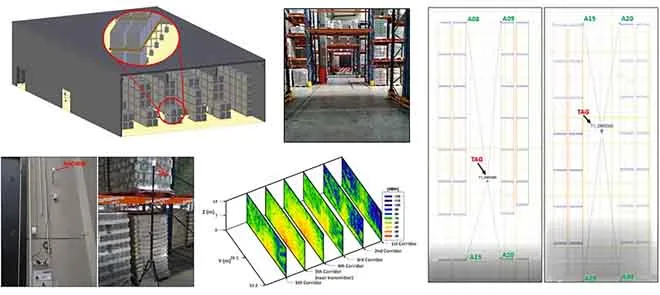Wireless Characterization and Assessment of an UWB-Based System in Industrial Environments
The latest industrial revolution (Industry 4.0) aims to increase efficiency, flexibility, mobility, resource optimization, and deployment capabilities in industrial scenarios through advanced digital technologies. Real-time location and tracking systems (RTLS) play a key role here, monitoring different variables of assets, production, storage, or distribution processes.
The integration of RTLS with the information and communication systems of companies, on-premises or in the cloud, combined with multiple sets of sensors and actuators, gives rise to an Industrial Internet of Things (IIoT) ecosystem in which location information can be combined with different parameters, providing an enriched process vision.
The WSNs employ technologies like ultrasounds, radio frequency (RF), microwave, and infrared signals for real-time location and management of transportation and logistics operations. A newly emerging technique, Ultra-wideband (UWB), shows promising potential for high-precision location accuracy and high-speed transmission. The UWB takes advantage of pulses of short duration that are propagated at carrier frequencies, usually in the 4 GHz or 6 GHz bands, providing inherently high spatial resolution.
One of the challenges these systems face is degradation in location estimation owing to multiple factors, such as non-line-of-sight conditions due to multiple obstacles within the operating environment, particularly in indoor industrial locations. The presence of interference sources or strong reflections of signals, especially where there are large quantities of metallic objects, gives rise to multipath propagation phenomena.
To optimize the performance of both RTLS and wireless communication systems, radio characterization tasks can be performed to model and understand the behavior of the UWB-based wireless network and to identify the impact of interference sources.
The researchers present a comprehensive wireless channel characterization and evaluation of UWB technology for indoor asset location and tracking in harsh logistics environments.
A deterministic simulation code based on the hybrid 3D Ray launching technique was used to analyze the design and deployment phases of UWB systems in a realistic scenario. The algorithm simulated large and complex logistics scenarios with high levels of accuracy to obtain frequency-domain and time-domain parameters. The simulation results for the 4 GHz and 6.2 GHz frequency bands are compared with those of RF power levels and empirical model measurements to validate the proposed methodology.
The simulation and measurement results showed good agreement, with average errors below 2 dB for all the cases analyzed. Moreover, the performance of the RTLS was analyzed by employing simulation and measurement results of the Time-of-Flight values obtained, which were compared with the rollout of anchor nodes physically deployed in the warehouse.
The tests have been conducted considering a scalable scenario with a parameterized number of goods within the pallets. The simulation tracks the impact of not only the percentage of occupation of the warehouse but also the changes in the types of materials stored inside. The assets tracked within logistic scenarios are containers, pallets, tools, machines, workers, or vehicles like forklifts and automated guided vehicles.
The proposed methodology successfully enables precise optimization of the RTLS and wireless communication systems, reducing interference and power consumption and maximizing quality of service metrics.




